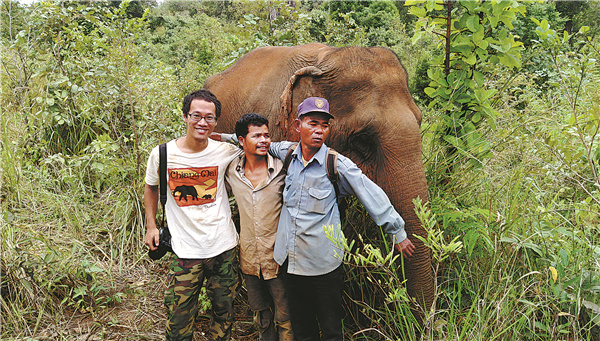

"To understand elephants, one needs to spend decades watching them closely. It's a long-term project and a lifelong career," Sun says.
He says that a good elephant watcher can remember the names of hundreds of elephants and will recognize each of them on sight. As long as they know which is which, they are able to understand the interactions and relations between different herds.
Due to his short time there, Sun was only able to recognize several of the elephants which sometimes played and grazed near the STE settlement.
"In fact, I felt like I was the one in a zoo, being watched by these curious elephants," Sun says.
"I had to be careful, though. I wouldn't stand too close to any of the wild elephants. They can be dangerous, especially if they feel threatened. They can run fast, and it is easy to get injured or killed by them," he adds.
When he went into the wild to watch elephants, he often used a telescope, making sure to stand downwind at a distance, so that the herd could not pick up his scent.
Apart from Kenya, Sun also worked at elephant camps and shelters in Asia, including facilities in Thailand, Laos and Cambodia, to gather materials for his study of elephants.
His second book for children, chronicling a 68-year-old elephant named Raindrop, is going to be published later this year.